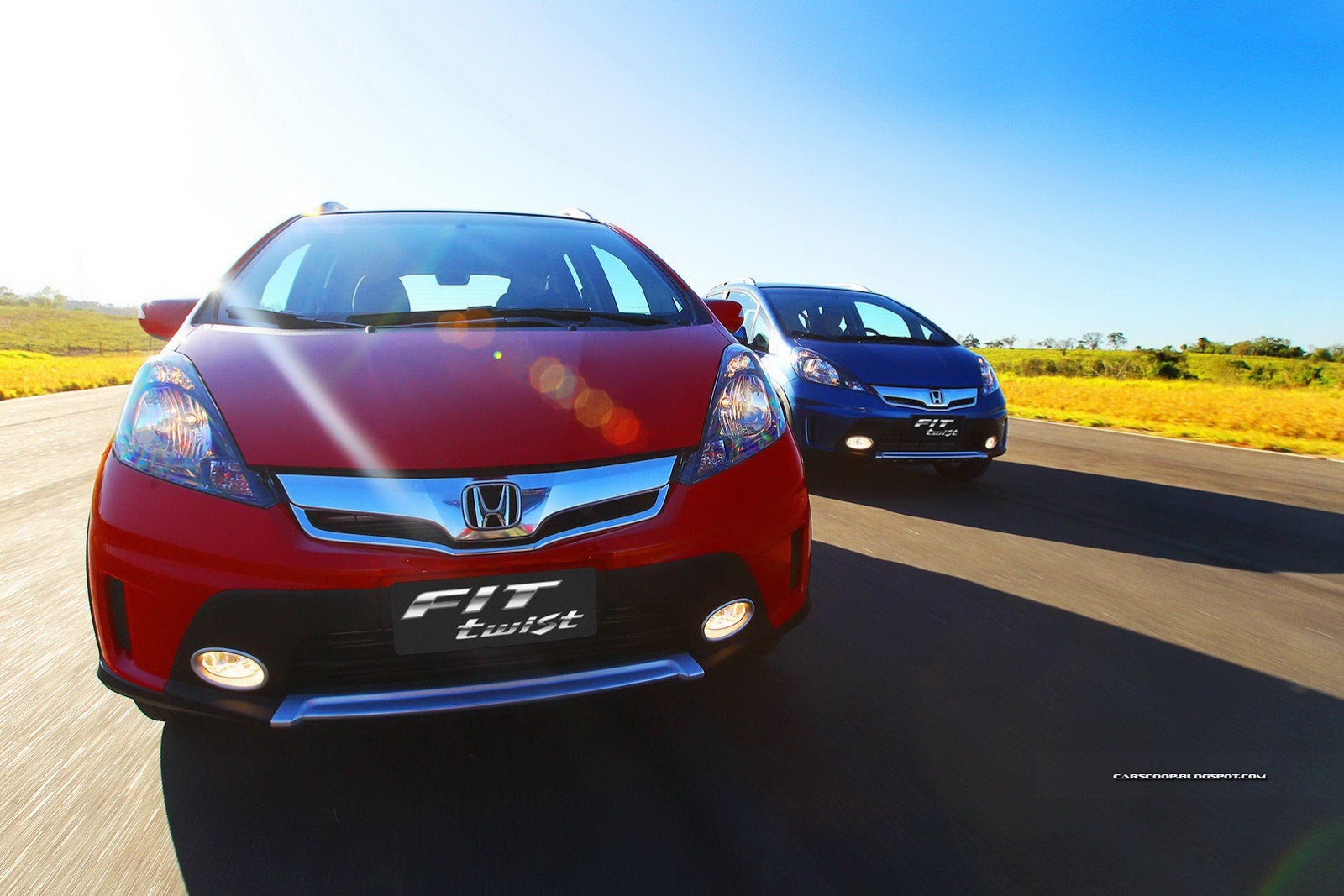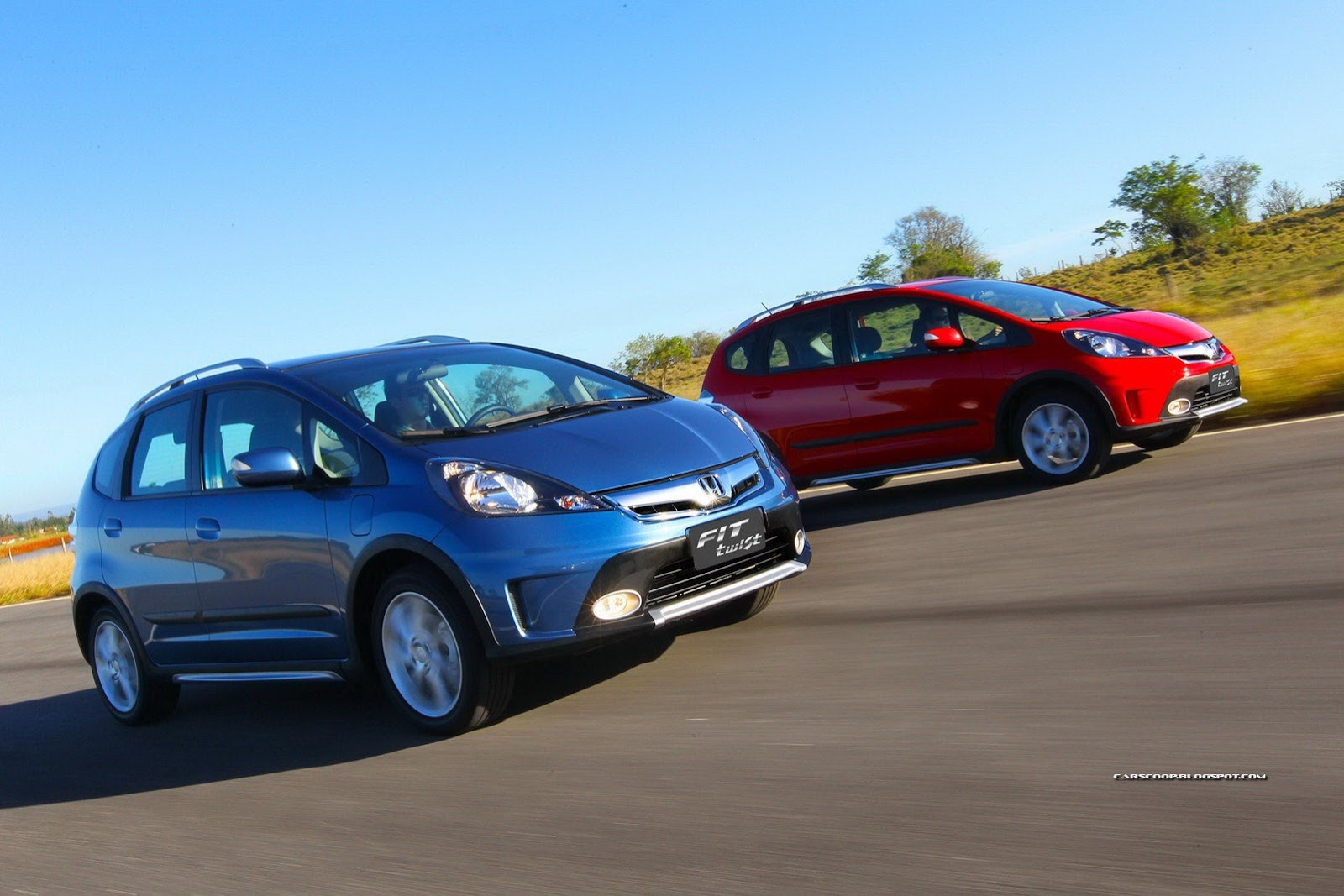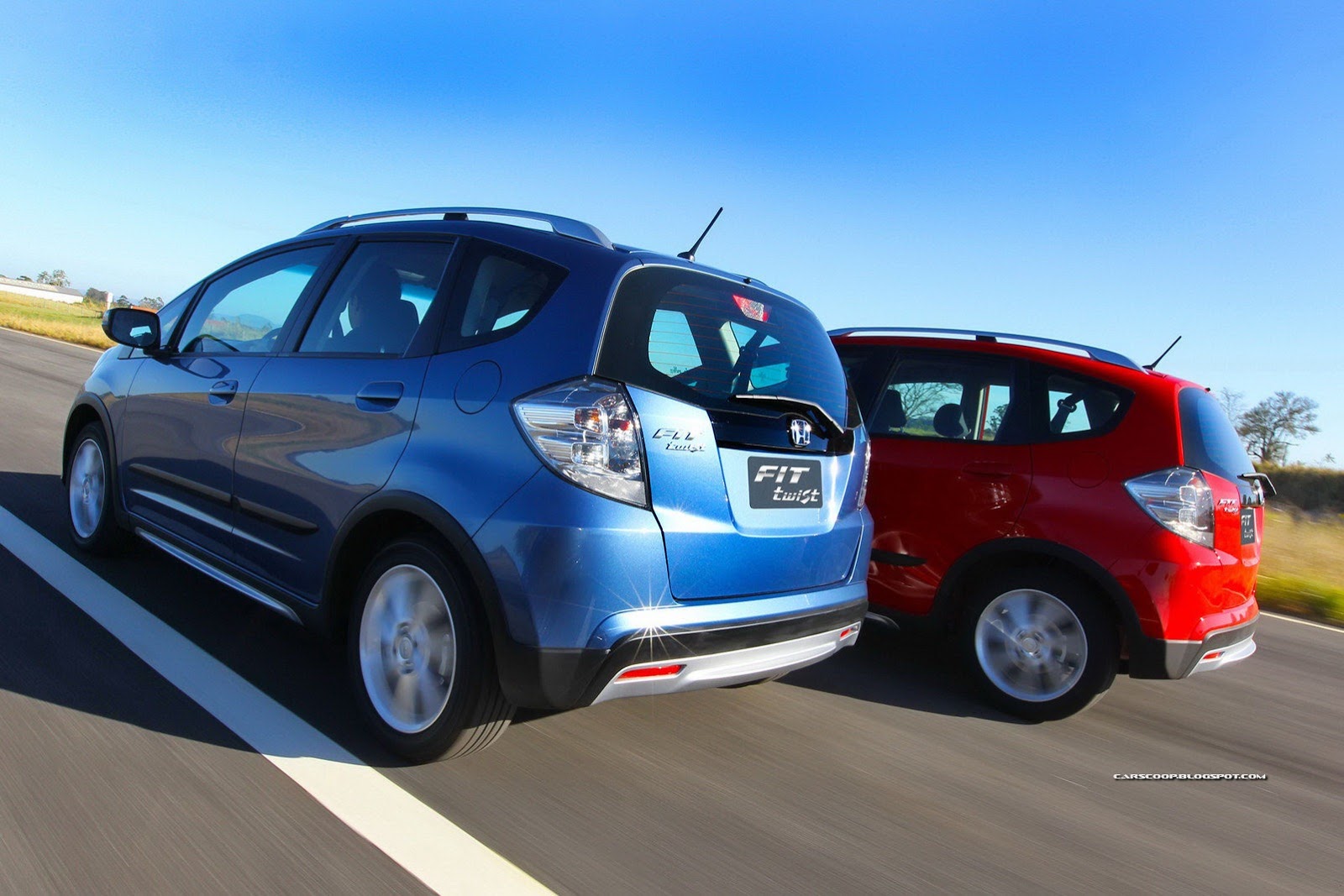
Motor
Discussion starter
81,880 posts
·
Joined 2004
- Add to quote Only show this user
Honda Updates Fit for 2012
![Image]()
![Image]()
![Image]()
![Image]()
![Image]()
![Image]()
![Image]()
Beginning with the 2012 Fit Sport, the exterior updates include a revised front grille and bumper, black headlight bezels and a dark "machined surface" finish for the alloy wheels.
Inside, the Sport benefits from a dark metallic dashboard trim that replaces the previous gray and black themes, the addition of chrome accents around the instrument displays, plus standard steering wheel-mounted audio controls and upgraded seat fabrics.
Furthermore, when equipped with a navigation system with Voice Recognition, the Fit Sport now includes Bluetooth HandsFreeLink.
The base Fit model gains body-color exterior mirrors and updated wheel covers, while all models get newly designed console-mounted center beverage holders along with console ambient lighting, and added sound insulation measures in the floor, front fenders and A-pillars, plus thicker front corner-window glass.
All Fit models are powered by a 1.5-liter four-cylinder engine generating 117HP at 6,600 rpm and 106 lb-ft. of torque at 4,800 rpm.







2,583 posts
·
Joined 2007
i dig the honda fit.nice and affordable for a family instead of some big suv
1,129 posts
·
Joined 2010
I was kinda wondering about that, too.
However, this might be my first Honda to own. I like the Fit and with the seats down, it could hold a lot of stuff.
After a few years with the Z, I'd prob opt for the Fit as my daily driver.
However, this might be my first Honda to own. I like the Fit and with the seats down, it could hold a lot of stuff.
After a few years with the Z, I'd prob opt for the Fit as my daily driver.
753 posts
·
Joined 2010
Same window area, not less. More thinner pillars with the same amount of glass. With thinner pillars more are needed to provide structural support. Might remove blind spots but also lessens the size of the roll up windows which reduces weight. Less weight=better MPH. The designers are doing their best but it's still ugly as hell, just like the new civic.
28,128 posts
·
Joined 2007
It doesn't look like any of the smaller pillars provide any structural support.
Motor
Discussion starter
81,880 posts
·
Joined 2004
Update!
<iframe width="640" height="360" src="http://www.youtube.com/embed/_zBvrKj-0E4" frameborder="0" allowfullscreen></iframe>
2013 Honda Fit EV
![Image]()
![Image]()
![Image]()
![Image]()
![Image]()
![Image]()
<iframe width="640" height="360" src="http://www.youtube.com/embed/_zBvrKj-0E4" frameborder="0" allowfullscreen></iframe>
2013 Honda Fit EV
Honda said that the Fit EV's MSRP is $36,625 with an estimated lease priced at $399 a month. It will initially be offered for lease to customers in select California and Oregon markets next summer, followed by six East Coast markets in early 2013.
The Japanese automaker said that it expects to produce around 1,100 Fit EVs over the next three years, though the number may increase if there's sufficient interest in the car.
The Fit EV is powered by a 20 kWh lithium-ion battery and a 92 kW (equal to 124HP) coaxial electric motor sourced from the FCX Clarity.
It also features a 3-mode electric drive system adapted from the CR-Z Sport Hybrid that allows the driver to select between Econ, Normal and Sport to either maximize efficiency or improve acceleration. Honda says that in Econ mode, driving range can increase by as much as 17-percent compared to driving in Normal mode, while Sport mode is claimed to "significantly" improve acceleration.
Other energy-saving features include a highly efficient electric air conditioning system and new regenerative braking system.
According to Honda, with a 240-volt charger, the Fit EV can fully recharge in about three hours, in which case it has a driving range of 123 miles (198 kilometers) in the city and 76 miles (122 kilometers) in combined city and highway driving.






1,160 posts
·
Joined 2010
A 36g Fit??? You think they'd at least make it mildly attractive at that price tag.
Motor
Discussion starter
81,880 posts
·
Joined 2004
Update!
Takeros Honda Fit Turbo
Takeros Honda Fit Turbo
.Head-on the Takero’s Fit still looks impressive, but the widebody sub-compact looks a little absurd from any other angle. The obvious advantage, however, is the ability to fit wider tires for more grip, with some massive 225/35/18 rubber on this machine. And that extra tire is no doubt necessary to help put down the extra power generated by the new turbocharger setup. Unfortunately, Takero’s hasn’t released any specs on the kit, but we’d expect something close to the 180 hp mark.
30,387 posts
·
Joined 2003
I can't explain why, because it is totally dorky, but I really like the Fit.
5,241 posts
·
Joined 2000
And the battery tech is already out-of-date. Trade in your battery-using powerplant cars now, people...
5,241 posts
·
Joined 2000
Well-equipped turbos will be at the FR-S/BRZ price point it seems...
Motor
Discussion starter
81,880 posts
·
Joined 2004
Update!
2012 Honda Jazz Si
2012 Honda Jazz Si
.The Si trim moniker for various Honda models throughout its history has always symbolized increased performance. Short for “sport injected”, fans of the Civic body will remember generations of Si models as being the funnest to own and drive.
So what makes this special edition Jazz Si special? Well it features a new body kit on the exterior, no doubt giving it a sportier appearance, further improved by the 16-inch wheels. Handling has also been enhanced with a larger front sway bar and the electronic power steering system has been tweaked for improved feel and response.
On the inside, Honda outfits the Jazz Si with black and silver supportive seats and a sporty leather-trimmed steering wheel.
But alas, with just 98-hp and 94 lb-ft of torque, this Jazz Si is hardly fit to sport the Si badge. In Honda’s defense however, the Si badge doesn’t have the same prestige in Europe as it does in America. If Honda plans on bringing a Fit Si to the U.S. however, it better live up to its “sport injected” name.
Motor
Discussion starter
81,880 posts
·
Joined 2004
<iframe width="640" height="360" src="http://www.youtube.com/embed/UNyFnTAXLGw?rel=0" frameborder="0" allowfullscreen></iframe>
<iframe width="640" height="360" src="http://www.youtube.com/embed/ovWzCDBYJm8?rel=0" frameborder="0" allowfullscreen></iframe>
<iframe width="640" height="360" src="http://www.youtube.com/embed/ovWzCDBYJm8?rel=0" frameborder="0" allowfullscreen></iframe>
Motor
Discussion starter
81,880 posts
·
Joined 2004
Update!
New Version of the Honda Fit with a Crossover Twist Debuts
![Image]()
![Image]()
![Image]()
If I were to buy a Fit/Jazz, it would be this one.
New Version of the Honda Fit with a Crossover Twist Debuts
The tougher-looking version of the Fit, which is sold in Europe and other parts of the world as the Jazz, is Honda's first vehicle to be developed exclusively for the Brazilian market.
On the outside, the Twist sports plastic cladding on the front and rear bumpers and over the wheel arches and side sills, a matte aluminum finish for the protective guards, mirror caps and the taller roof bars, bigger 16-inch alloy wheels, a re-styled front grille, dark headlamps and clear tail lamp fixtures.
The interior of the car is said to remain largely unchanged sans the new upholstery, the waterproof floor carpet in the boot area, and the chrome accents on the dashboard, air vents and handbrake.
In spite of its more rugged appearance, the Fit Twist doesn't even feature changes to the suspension setting as Honda kept the same ride height as the regular hatchback, with which it also shares its 1.5-liter flex-fuel engine producing 116hp when running on ethanol and 115hp on gasoline, connected to either a manual or an automatic transmission driving the front wheels.
The new Fit Twist will go on sale in Brazil at the end of October with a starting price of R$57,900 (US$28,600 or €21,900 at today's exchange rates), about R$10,000 (US$5,000 or €3,800) more than the base Fit hatchback.



If I were to buy a Fit/Jazz, it would be this one.
-
?
-
?
-
?
-
?
-
?
-
?
-
?
-
?
-
?
-
?
-
?
-
?
-
?
-
?
-
?
-
?
-
?
-
?
-
?
-
?
- posts
- 5.6M
- members
- 60K
- Since
- 2001
A forum community dedicated to all 7th Generation Toyota Celica owners and enthusiasts. Come join the discussion about modifications, troubleshooting, engine swaps, maintenance, and more!



